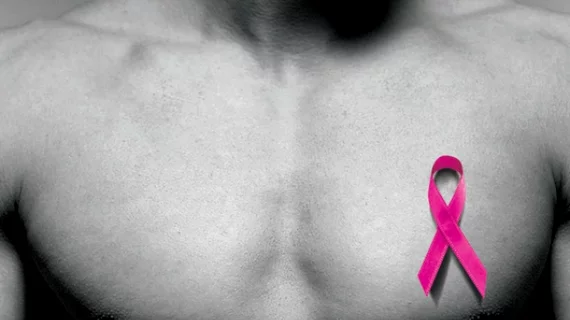Male breast cancer patients represent small portion of referrals but generate significant workload
Male breast cancer patients represent a small portion of radiology referrals but generate a “significant” workload for the specialty, according to a new study published Wednesday.
About 75% of such referrals result in imaging while only 1% lead to a cancer diagnosis. The findings are part of a retrospective review of outcomes at Cambridge University Hospitals between 2015-2019, published in Clinical Radiology.
“Imaging protocols—incorporating clinical score and age cut-off at 40 years—remain robust for detecting malignancy,” Nuala Healy, MD, a consultant radiologist with the Cambridge Breast Unit, and colleagues concluded. “Clinician awareness of the imaging protocol, and close liaison with radiologists is essential to minimize additional radiology workload.”
Their study sample included nearly 1,400 men who visited the unit during the five-year period, with three-quarters requiring imaging. Providers performed biopsies on 3% of subjects (41 men), with 1% (14) resulted in a cancer diagnosis. Clinical examination of the subjects logged 42.7% sensitivity at identifying true positive cases of the disease and 99.5% specificity at correctly identifying negative instances. That’s compared to 78.6% sensitivity and 98.9% specificity logged by ultrasound, while mammography landed slightly higher at 84.6% and 99.4%, respectively.
Current guidelines for assessing male breast symptoms vary, creating inconsistencies in radiological workups, the authors noted. The Royal College of Radiologists suggests performing imaging in male patients with unexplained or suspicious unilateral breast enlargement or if there is difficulty differentiating between gynaecomastia (swollen male breast tissue) or fatty enlargement. RCR recommends bilateral mammography or ultrasound, with the latter only advised in men below age 50.
Adherence to such guidelines was below the authors’ expectations. About 41% of men under age 40 underwent imaging not deemed necessary versus 51% under age 50.
“Due to the high sensitivity and specificity of mammography and the irregular, often indeterminate nature of gynecomastia on ultrasound, mammography should be considered as the first-line test as it may limit the number of benign biopsies,” the authors advised.

